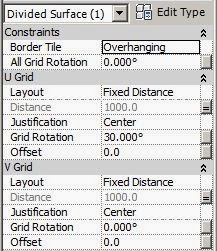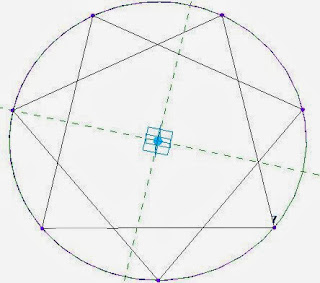Repeater Star Patterns in Revit
Since the parametric stars are made as adaptive components, they can be placed on a node of a divided surface (in a conceptual mass or another adaptive component)Once the star has been placed it can be arrayed using the "Repeater" command to form a geometric pattern
By changing the radius of the circular rig in the adaptive star, it changes the size of the star and hence the pattern
Once the stars overlap it gives a completely different effect
Going back to the original size, the number of points on the star can be changed. however, a five pointed star does not result in an interesting pattern once they overlap each other. Likewise, 4 or 3 pointed stars don't look good (crosses and triangles)
Increasing the number of points to seven, does work reasonably well, although it looks a bit messy as the overlap increases!
An eight point star works well on a square grid pattern:
You can also change the background grid on the divided surface. In this example one of the grids is rotated by 30 degrees:
The resulting patterns can be triangular or hexagonal in nature:
Just by changing the size of the star (radius of underlying crcle) you can get radically different patterns.
I hope that someone finds a use for this flexible way to create parametric patterns in Revit (2013 or later).










































